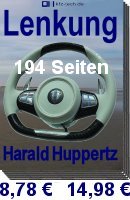With these high ambitions and the non-perception of Germany's more modest possibilities, the profits of 1920 and later, left a lot to be desired. In addition, the problems were even more aggrevated by the crisis in the Gotha head office. This was exactly the chance which Schapiro, a financial shark was waiting for. Buy up at a low price, renovate and get rid of it, this was the concept, even at that time.
The question was how? His idea was: In Great Britain there was the very simple, reasonable and thus easy to sell Austin Seven. The licence was aquired and the car was sold under the name Dixi with the add-on 'Deutsche Ausführung 1' (German version 1). However, the fact that this undertaking was not sufficient to rescue the factory in Eisenach, was BMW's big chance.
The company was running the risk of losing the reputation of being able to make it's products a little better than those of the competition. The opinion of the managers at BMW was however, if the target was getting into the automobile production at all, then, in these difficult times, the most suitable product was the Austin Seven. They even tried to compete, through the price, with Opel, which was probably the only company which was still earning money.
Even the car bodies were not produced by them, but by Ambi Budd. Could BMW earn enough money, using this method, to even pay off the debts incurred by the take over of Eisenach? It can be assumed, that the productioin of aircraft engines generated enough profit to co-finance the automobile sector. This would prove to be the case until the end of the automobile production in 1939/40.
Up to and including 1923 balances were generally difficult to achieve. The rising inflation was making itself noticed. It was not known just how much money main shareholder Castiglione, had pumped into the undertaking. Astonishingly, despite the ban, the building and selling of aircraft engines carried on, preferably through Russian channels. From 1926 onwards the ban on production was raised, the volume then increased incredibly, later with an additional factory in Allach, right up to the end of the Second World War.
| | |||||||||||||||||||||||||||||||||||||||||||||||||||||||||||||||||||||||||||||||
